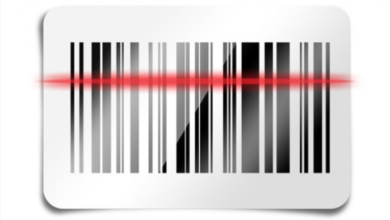
The Internet of Things (IoT App Development) has changed the way that devices and systems communicate, resulting in an interconnected world in which data is freely exchanged between the digital and physical realms.
With its increasing applications across industries like manufacturing, healthcare smart cities, healthcare and retail, businesses are increasingly using IoT application development to boost efficiency in operations, improve customer experience, and spur innovations.
But, like any innovative technology, the process of developing IoT applications is not without the same set of challenges.
The article we’ll examine the major challenges developers and companies have to face with IoT software development and the solutions that could assist them in overcoming these challenges.
In identifying the obstacles and identifying effective ways to overcome them, companies can ensure the success of their customized IoT developing services.
1. Security Concerns in IoT App Development
One of the major issues when it comes to IoT developing apps is to ensure the security of connected devices.
Every device that is connected to an IoT network could be a security vulnerability, which is why security is an essential concern.
Because data is transmitted continuously between devices, a breach could have devastating results such as theft of data, unauthorized access to the system, or even manipulation.
Solutions:
End-to-End encryption: Implementing encryption protocols that are strong guarantees that data remains safe starting from the time it leaves a device until it arrives at its final destination. This is vital to safeguard sensitive data shared on the network.
Continuous Firmware updates: The devices that are part of an IoT ecosystem need to be updated regularly to fix new security issues. IoT software development tools must allow users to keep firmware updated without affecting the device’s functionality.
Multi-Factor authentication (MFA) Implementing MFA on IoT devices could provide an additional level of protection. In requiring users to verify their identity through multiple ways to ensure that they are not gaining access is reduced.
For companies that are looking for customized IoT development, addressing security concerns must be top of the list, from the initial design stage through after deployment.
2. Interoperability Between IoT Devices
IoT systems typically consist of diverse devices from various manufacturers, with different communication protocols. Integrating these devices is a challenge, particularly for large-scale deployments, such as urban smart city or industrial IoT applications.
Solutions:
Standardized Communication Protocols Implementing universal standards like MQTT (Message Queuing Telemetry Transport) or CoAP (Constrained Application Protocol) allows communication between various IoT devices regardless of the manufacturer.
API Integration: The provision of APIs (Application Programming Interfaces) that allow devices to exchange data and communicate between them is crucial. IoT applications development services must make sure that their apps support solid API integration.
— Middleware Solutions: Middleware platforms provide a bridge between the devices and applications and enable interoperability within complicated IoT ecosystems. They simplify communication and data management across a variety of devices.
A partnership with an expert IoT developer will help companies navigate the maze of interoperability, and implement systems that operate effectively across various platforms.
Suggested Read: https://appinventiv.com/blog/iot-in-healthcare/
3. Scalability Issues in IoT Networks
As IoT networks expand in size, the management of the growing quantity of sensors, devices and system interactions become more complicated. Without a flexible infrastructure, performance may suffer which can lead to slow responses, data congested and even failures of the system.
Solutions:
Edge Computing Instead of sending data all the way to a central cloud Edge computing process data closer to the source, thus reducing the amount of latency and bandwidth required.
This technique can dramatically enhance the scalability and capacity of IoT devices, particularly for real-time applications such as autonomous vehicles and industrial monitoring.
Cloud Integration: Utilizing cloud services gives you virtually unlimited capacity for storage as well as computing, allowing IoT networks to expand quickly without slowing down performance. IoT development solutions that use cloud-based infrastructures can handle the increasing amounts of data easily.
Modular Architecture: Creating IoT systems using a modular approach lets businesses modify or remove components when needed, which provides the flexibility and capacity to grow in the course of time.
Working with a custom IoT development service provider companies can build systems capable of handling growth in the future without compromising performance.
4. Data Management and Analytics
The huge amount that is generated from IoT devices creates a huge problem with regard to storage and management as well as analysis. To gain actionable insight from this information to make sense of it, it has to be collected and processed efficiently, while also keeping in line with the privacy laws governing data.
Solutions:
Big Data Analytics Tools: The use of advanced analytics tools to process and analyze huge quantities of data in real-time is essential. These tools help businesses identify patterns, improve processes, and make decision-based on data.
Information Storage Solution: IoT technology generates both unstructured and structured data, which calls for safe and scalable storage solutions. Utilizing cloud-based storage, or hybrid models (cloud combined with on-premise) makes sure that data is securely stored and readily accessible.
AI as well as Machine Learning: Integrating AI and machine learning algorithms into IoT services for application development can improve predictive analytics capabilities. This allows companies to predict patterns, identify anomalies and make better-informed decision-making.
Data management and analytics that are efficient are the primary advantages for companies that make use of IoT. Selecting an expert IoT application development service provider can guarantee that your system can manage huge-scale data-related issues.
5. Power Consumption and Energy Efficiency
IoT devices, specifically ones that operate in environments with limited resources must be energy efficient. A high power consumption could reduce the life span of devices and raise maintenance costs, which makes the efficiency of energy a crucial factor when it comes to IoT development.
Solutions:
Lower-Power Wide-Area Networks (LPWAN): LPWAN technologies, like LoRaWAN and NB IoT, are specifically designed to offer long-range communications with the least power consumption.
Integrating such networks within IoT solutions can increase the duration of battery life, and also reduce operating costs.
Energy Harvesting: Ingenious methods like solar power or kinetic energy and thermal energy harvesting, can be used to power IoT devices in places where traditional power sources are not available. This is particularly beneficial in remote monitoring devices, like environmental sensors as well as agriculture-related IoT devices.
Optimized Firmware: Making sure that IoT devices are powered by efficient firmware can dramatically reduce the energy usage. This requires optimizing software so that devices only turn on essential functions when necessary.
When looking for IoT software development services, businesses should focus on energy-efficient solutions that lower the operating cost and prolong the lifespan of devices.
Conclusion
IoT apps developing services have opened up new opportunities for companies across all industries, but getting through the development process involves overcoming many of the major challenges.
In addition to security, scalability and scale, to energy efficiency and management of data every obstacle requires careful analysis and customized solutions.
When collaborating with reliable IoT development service companies, they can benefit from the experience and tools necessary to tackle these challenges head on.
If it’s secure data transmission and seamless interoperability or maximizing energy usage The right customized IoT development services will make sure that your IoT solution is not just functional today, but also expandable and sustainable in the near future.
In the years ahead, as IoT continues to grow and grow, companies that invest in reliable and secure solutions will lead in digital transformation and innovation.




